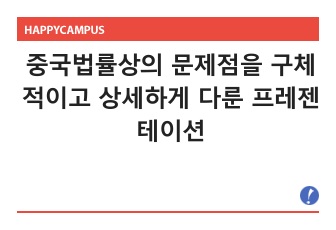校長의 指導性行爲ㆍ狀況 및 組織效果性間의 關係硏究
* 본 문서는 배포용으로 복사 및 편집이 불가합니다.
서지정보
ㆍ발행기관 : 한국교육학회
ㆍ수록지정보 : 교육학연구 / 22권 / 1호
ㆍ저자명 : 金昌杰
ㆍ저자명 : 金昌杰
목차
Ⅰ. 序論Ⅱ. 理論的 背景
Ⅲ. 硏究仮說의 検證과 解釋
Ⅳ. 結論
參考文獻
[Abstract]
영어 초록
This study is an empirical attempt to investigate the relationships among the principal’s leadership behavior, situations, and organizational effectiveness in the secondary schools with priority given the situational leadership theory. Consquently, the main variables in this study are principal’s leadership behavior, situations, and organizational effectiveness.Therefore the purpose of this study is to examine situation-controlled leadership effectiveness in relation to these variables. The specific objects of this research are ⑴ to investigate the relationships between or among variables identified in this study, ⑵ to examine the influences of these variables on one another, ⑶ to examine leadership effectiveness according to the levels of situational variables, ⑷ to inquire into the differences between direct and indirect effects which leadership behavior has on organizational effectiveness through situational variables, and ⑸ to survey the relationships between variables in terms of school characteristics and personal characteristics of teachers.
In order to accomplish the above objects, eight sub-variables have been identified on the basis of a survey of the literature concerned. The sub-variables of principal’s leadership behavior consist of task structure and human relationship. Situational variables are teacher maturity, communication and job character. Organizational. effectiveness involves three determinants: namely, job satisfaction, job performance and adaptability of organization.
To schematize the relationships among these eight sub-variables, a conceptual model is tentatively proposed within the famework of the contingency leadership theory and systems theory.
On the basis of the theoretical background and the conceptual model, five hypotheses have been formulated for this research purpose.
Hypothesis Ⅰ. There can be positive significant correlations among principal’s leadership behavior, situations and organizational effectiveness sub-variables with one another.
Hypothesis Ⅱ. Principal's leadership variables and, or situational variables can have different influences on the sub-variables of organizational effectiveness and situational variables can have different influences on principal’s readership behavior.
Hypothesis Ⅲ. Depending upon situational variables, principal’s leadership behavior can have different correlations to organizational effectiveness variables.
Hypothesis Ⅳ. Principal’s leadership behavior variables can have a more indirect than direct effect on organization effectiveness variables through situational variables.
Hypothesis Ⅴ. There can be significant differences among the variables of this study in terms of school characteristics and personal characteristics of teachers.
To test these hypotheses, questionnaires were devised through statistical procedures in order to measure the validity and reliability of the items related to these eight variables. The subjects were 1,250 secondary school teachers randomly sampled through out Korea. Data collected were analyzed by the correlation, multiple regression, partial correlation, path analysis methods, specifically following the procedures proposed in SPSS, KAIST.
From this analysis, the following conclusions can be drawn:
1) All the sub-variables studied except the relationship between human relationship and job performance, show positive significant correlations. This demonstrates the validity of the systems model proposed in this study and suggests that task structure is more influential to job performance than human relationship.
2) Three findings have been made through a multiple regression analysis of all the sub-variables.
⑴ In the case of the influences of the principal’s leadership variables on organizational effectiveness variables, the task structure dimension of leadership behavior is shown to be more influential to such organizational effectiveness variables as job satisfaction, adaptability of organization, job performance than the human relationship dimension.
⑵ In the case of the influence of situational variables on organizational effectiveness, communication is shown to be more influential to job satisfaction, job character to adaptability of organization, and maturity to job performance.
⑶ In the case of the influence of situational variables on leadership behavior variables, communication is shown to be more influential to both dimensions of leadership behavior. Moreover, each situational variable has some relative weight on each of the leadership behavior variables.
3) The relationship between leadership behavior and organizational effectiveness reveals that teacher groups with higher levels of situational variables have higher perceptions of principal leadership behavior and organizational effectiveness while teacher groups with lower or intermediate levels of situational variables have perceptions of leadership behavior and organizational effectiveness to that extent.
4) The partial correlation and path analysis, excluding situational variables of leadership behavior and organizational effectiveness variables, reveal that leadership behavior variables have more indirect effects on organizaitonal effectiveness through situational variables than direct effects.
5) The average differential analysis of school and personal characteristics reveals that urban cases mark lower averages in human relationship and communication but higher averages otherwise than rural cases. Public schools in all variables, have higher averages than private schools. Male teachers show higher averages in all variables except job satisfaction. Teacher groups of 8-14 years of experience show higher averages in maturity and job performance while groups of 15-21 years have the highest averages otherwise. The problem is that teachers of low and high seniority have lower perceptions of each variables. This makes it difficult to anticipate the effectiveness of education. Therefore, to increase their perceptions of these variables, it is proposed that an adequate system of reward and self-realization be expanded.

























